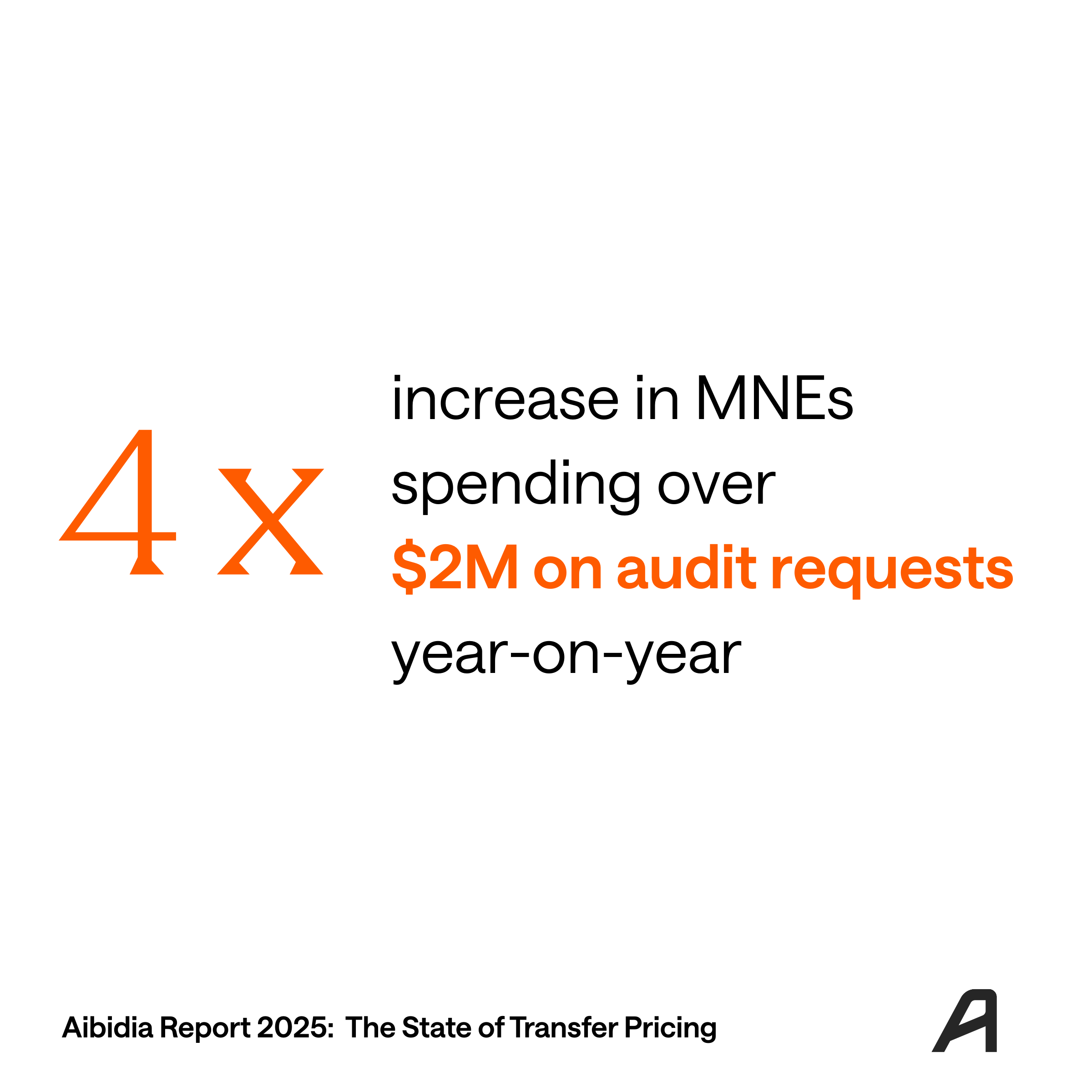
Operational transfer pricing (OTP) has arisen as a significant opportunity and challenge, involving the daily implementation, monitoring, and adjustment of transfer pricing.
Our recent webinar, "Deep Dive into Data Management and OTP – Insights from Aibidia's 2024 Report," featured a panel of experts who discussed these changes and how they will affect the future. The webinar provided valuable strategies for tackling OTP challenges, thanks to the expertise of Katarzyna Malarek-Penkala from the Transfer Pricing Centre Association, Pia Honkala from Aibidia, and Borys Ulanenko, advisor to Aibidia and founder of ArmsLength AI.
To watch the full webinar, click here.
Based on insights from Aibidia's recent industry survey and panel discussion, here are the top 5 Operational Transfer Pricing challenges to keep in mind as you look to excel at OTP:
1. Establishing a single source of truth
Over half (54%) of companies surveyed said they still rely on multiple separate data sources for their OTP processes. This requires them to manually extract, organize, and improve the data, leading to a significant time investment. Smaller companies are more likely to have a single, robust data source. As you evolve your OTP capabilities, work towards integrating transfer pricing data into a centralized repository, leveraging initiatives like SAP S/4HANA migrations.
2. Bridging the gap between tax and finance
OTP is often in a gray area between tax/transfer pricing and finance/accounting. Tax/transfer pricing sets policies and methods, while finance/accounting puts them into action.
An effective OTP manager needs to translate between the "economic language" of transfer pricing and the "accounting language" of finance to ensure policies are reflected properly in systems and processes. Collaboration is key.
3. Designing with implementation in mind
Transfer pricing policies and methodologies defined by tax are not always easy to implement in practice by finance teams. For example, policies based on complex profit level indicators like the Berry Ratio can be extremely difficult to put into practice.
When defining policies, TP managers need to work closely with OTP managers to ensure they are viable and sustainable. Implementation is not an afterthought.
4. Engaging stakeholders early and often
OTP is not just a compliance exercise - it has real impacts on how revenue and costs flow between entities and how profit margins look across the organization. Changes in transfer prices can impact various aspects, ranging from local statutory accounts to management bonuses.
So, it's critical to involve business unit finance, accounting, and other stakeholders early when making adjustments. Socialize impacts to get buy-in.
5. Leveraging technology wisely
Excel is still the most common tool for executing OTP, but it reaches its limits as complexity grows. Using the right Operational Transfer Pricing technology can help improve efficiency and control, particularly when built on a centralized data model.
But technology alone is not a silver bullet.
An effective solution requires the right mix of defined processes, skilled people, and well-implemented digital tools.
Navigating the Operational Transfer Pricing challenges
By proactively addressing these key challenges, multinationals can evolve from reactive and slow-moving approaches to become agile, with complete control and visibility across their transfer pricing landscape, enabling them to outperform the competition.
We want to thank Katarzyna Malarek-Penkala, Pia Honkala and Borys Ulanenko for sharing their expert insights on data management and operational transfer pricing strategies.
To watch the full webinar, click here.






.png)

.png)

.png)
.png)






.svg)
